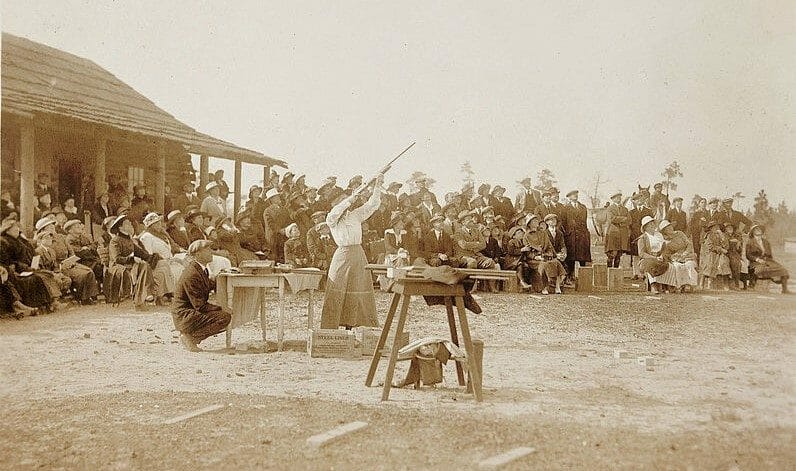│By Eloise Sinclair, Gale Ambassador at Durham University│
In July 1889, Mr. Russell Harrison, the son of US President Benjamin Harrison, visited Buffalo Bill’s Wild West encampment. He was welcomed with a spectacular breakfast of “clam chowder, baked beans with a flavor of savory pork, corn bread, custard pie and ice cream”. After which, he was taken for “a ride in the famous Deadwood Coach,” and gifted with a 5-cent piece. This was no ordinary 5-cent coin – a hole had been pierced through its centre by one of Annie Oakley’s bullets. I first learned about the celebrated sharpshooter Annie Oakley and the role she played in providing the West with an identity during a trip to the National Cowgirl Museum in Texas, a visit which left me eager to learn more. By using Gale Reference Complete, a package of digital resources available at Durham, I was able to explore a range of documents detailing her life and legacy.
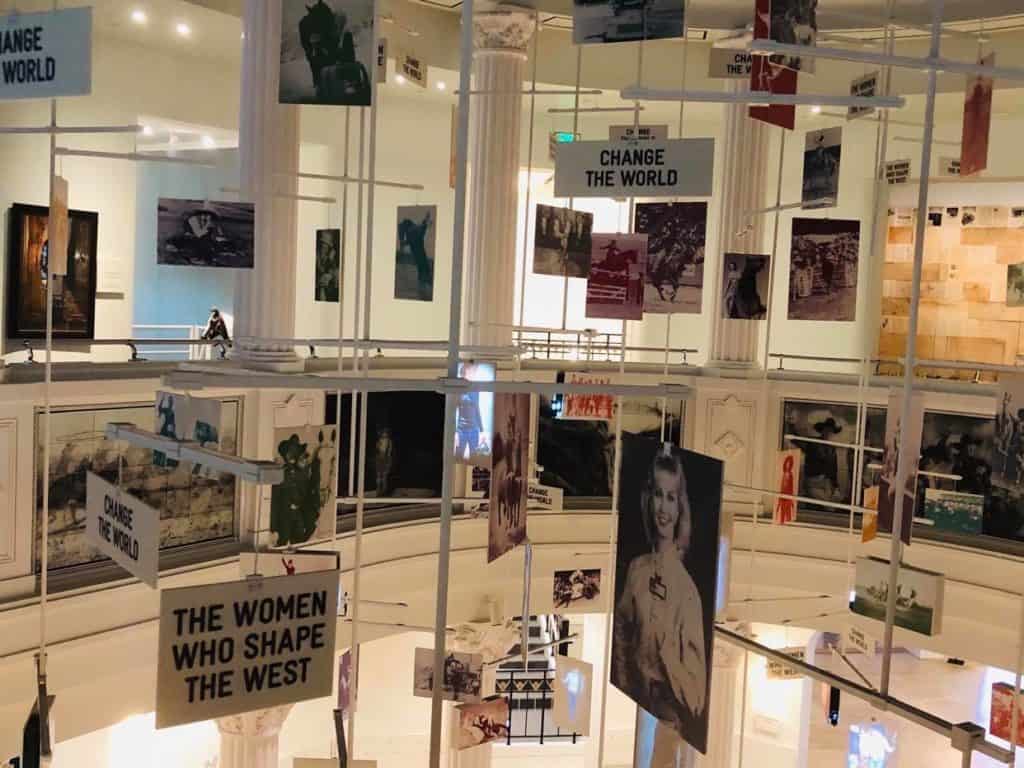
Oakley’s Life
I began by using “Annie Oakley” as my search term in Gale eBooks, quickly finding an outline of her life in the Dictionary of Women Worldwide: 25,000 Women Through the Ages.
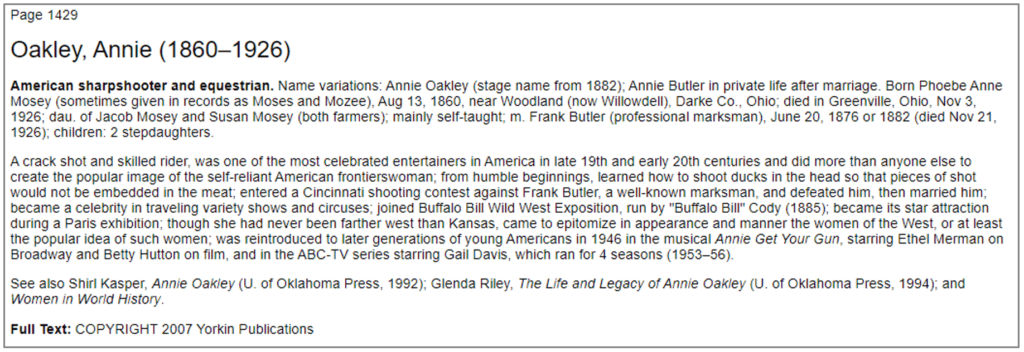
Next, I used Gale Historical Newspapers to examine some of the significant events of her life in greater detail. An article from The Telegraph Historical Archive gave me a fantastic insight into her early life and rise to fame. She started life as a “drudge on a farm where she was brutally treated,” taught herself to shoot at only thirteen and two years later entered “a shooting match against a professional,” Frank Butler, “whom she defeated”. Following her success, she joined Buffalo Bill’s Wild West Show, exciting “the admiration of Sitting Bull, the Indian chief” and prompting him to enroll “her as a member of his tribe”, securing her place in the spotlight.
I then used the Topic Finder tool to produce a Term Cluster visualisation to find other articles which mentioned Buffalo Bill and his show:
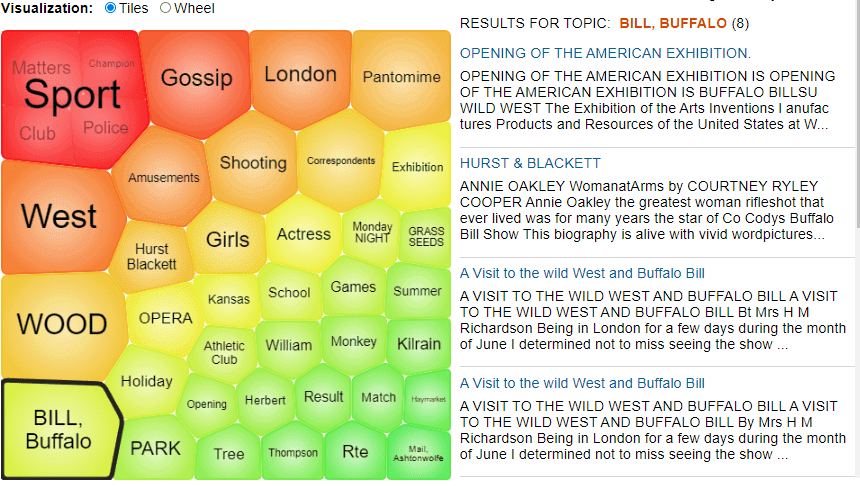
One article I came across reported that the Wild West Show travelled to London in 1887 and was attended by “a Royal party” which included “ the Princess of Wales, Prince Albert Victor, Princesses Victoria, Mande, and Louise of Wales, and the Grand Duke Michael of Russia”. “At the request of the Princes … Miss Annie Oakley” treated them to a private performance.
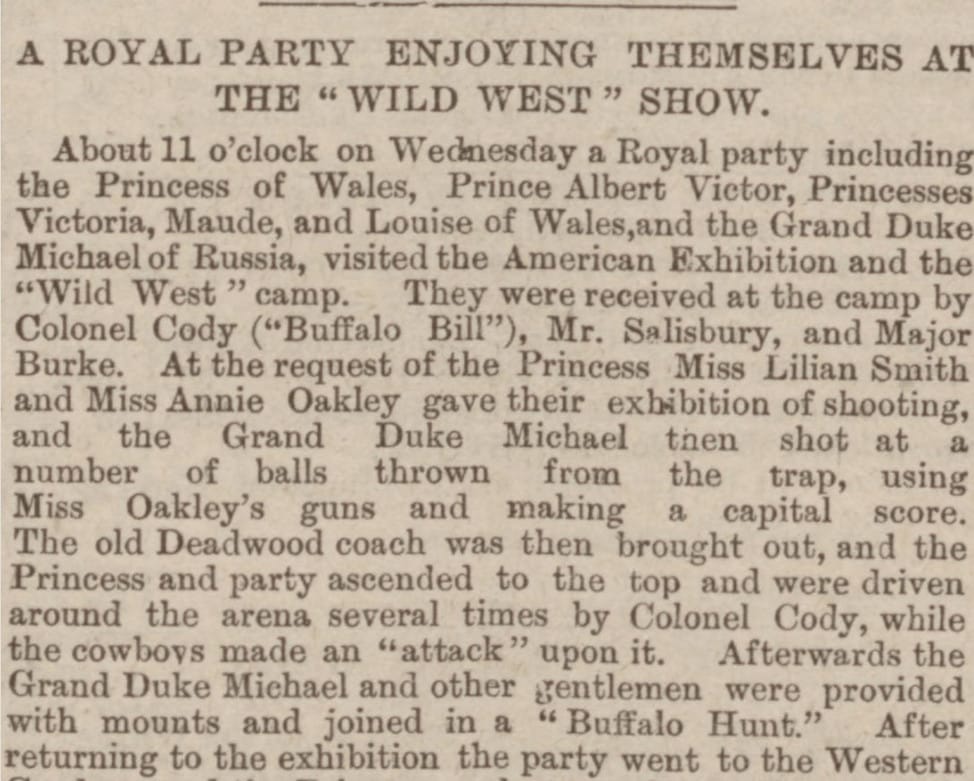
Throughout her career Oakley instructed women in marksmanship, promoted freer clothes and “sport and healthful exercise” for women, continuing this until the decline of her health in 1925. As demonstrated here, Gale’s global sources are extremely useful for researching individuals like Annie Oakley who were celebrated on both sides of the Atlantic.
Oakley’s Legacy
Whilst researching Oakley’s legacy, I used the cross-search function in Gale Reference Complete to find and compare sources from a number of platforms. This proved to be very helpful as I was able to quickly sift through the wide range of source types. As well as perspectives in academic journals, I found a number of media reports.
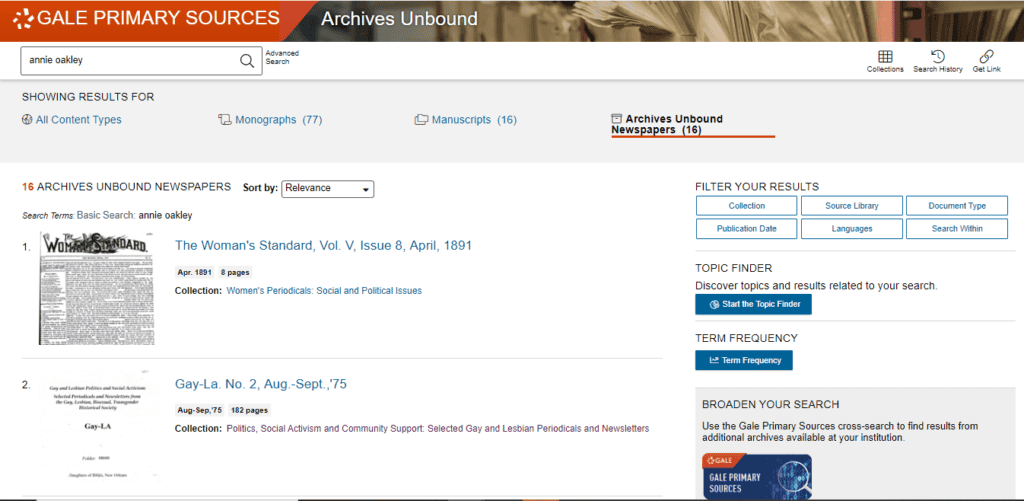
To obtain a balanced picture of the effect Annie Oakley had on society, I first examined these articles, and then compared them with pieces from academic journals, which I accessed via Gale Literature and Gale Academic OneFile. I found that newspaper articles since her death tended to have provocative headlines, aimed at shocking audiences and discrediting Annie. One from The Telegraph Historical Archive began with, “ANNIE OAKLEY, the legendary sharpshooter, may not have been all she was cracked up to be.” Upon reading further, it became clear that there was very little evidence behind these bold claims, which relied entirely on a few wooden bullets that had been “picked up by a small boy employed to clean up” after a show in East Sussex, which were only brought to the attention of the press ninety years later.
![Screenshot of Fleet, Michael. "Trick bullets could shoot a hole in the legend of Annie Oakley." Daily Telegraph, 5 Feb. 1994, p. [1]. The Telegraph Historical Archive](https://review.gale.com/wp-content/uploads/2020/10/Annie-Oakley-Trick-Bullets-1024x540.jpg)
Academic articles, on the other hand, have focused on her significance with regards to developing perceptions of women and the American nation, rather than questioning how skilled she was. Annie carefully negotiated the terrain between masculinity and femininity by “coding her act in a specifically gendered fashion”. Her signature entrance which combined “a light running step” with a “small curtsey” was carefully choreographed to not “offend contemporary social and gender sensibilities.” Moreover, her shooting act was “placed at the beginning of the show” making Buffalo Bill’s Wild West a public space in which women “who felt nervous when confronted with the noise and smoke of gunfire” could feel comfortable in. They were instantly reassured when they saw “a petite, attractive woman” enter the stage.
Annie continued to influence the lives of women after her death in 1926. Young girls in the 1950s and 1960s often dressed up as her, unsettling “the historical and contemporary imagery of domestic white womanhood,” and promoting a “gendered modernity” which legitimised women’s role outside of the home. Her “displacement of gender expectations” within the context of the Wild West was also “fundamental to the construction of an ‘American’ identity” which embraced the country’s “cultural diversity and regional divisions”, creating a new “model of nationalism”.
The resources and search functions in Gale Reference Complete, paired with other Gale resources such as The Telegraph Historical Archive, enabled me to access documents from a wide range of primary source archives and secondary source databases, narrow down my search, explore specific events in detail, and ultimately compare the narratives in primary sources with those in secondary literature, providing me with a clear and balanced picture of the significance of Annie Oakley’s career.
Want to read more about the representation and deconstruction of traditional gender roles, and achievements of women? Check out: “When is a Woman…?” Exploring Cultural Expectations of Women Advocated in Historical Newspapers, The Evolution of Women’s Football, or Leading Ladies: The actresses who fought for women’s suffrage.
Blog post cover image citation: Annie Oakley shooting a shotgun in front of dozens of spectators. Pinehurst, NC. Unattributed, Heritage Auction Galleries [CC BY-SA 2.0 (https://creativecommons.org/licenses/by-sa/2.0)], via Wikimedia Commons https://commons.wikimedia.org/wiki/File:Annie_Oakley_shooting_at_Pinehurst.jpg

